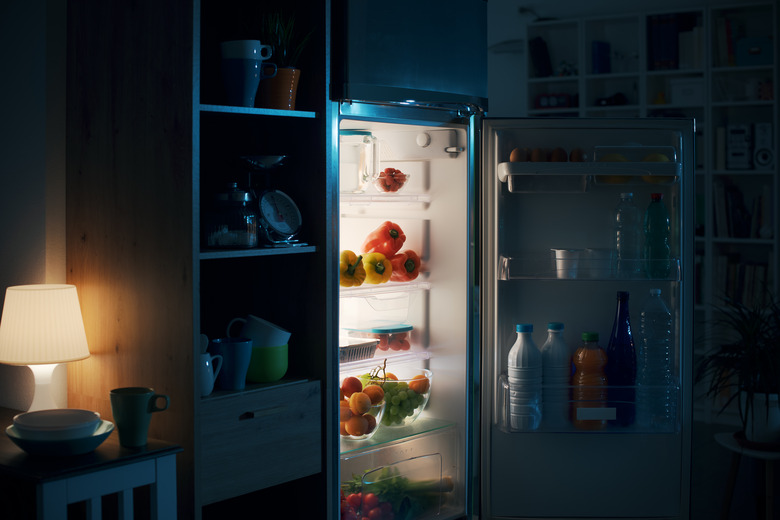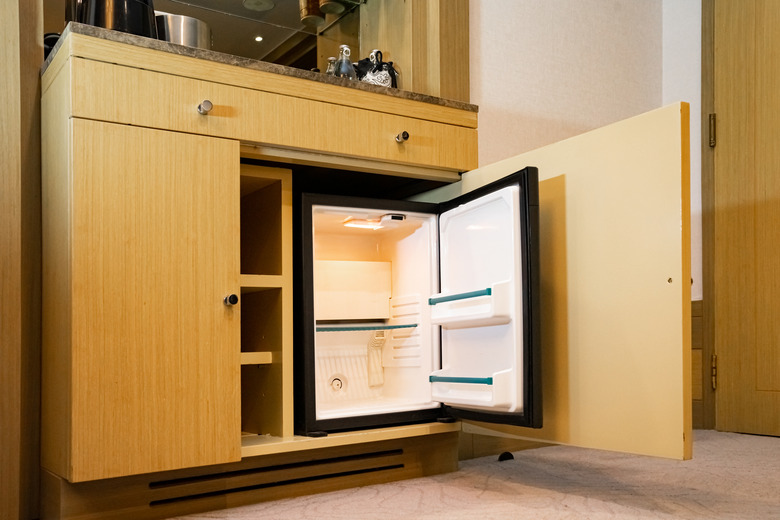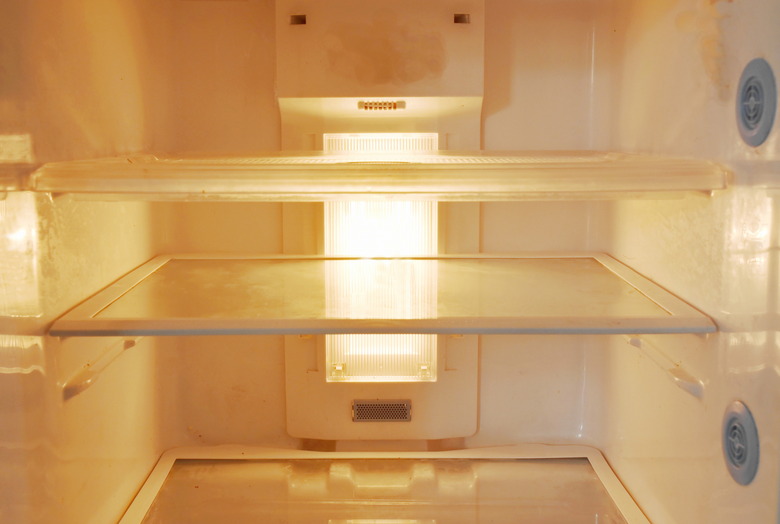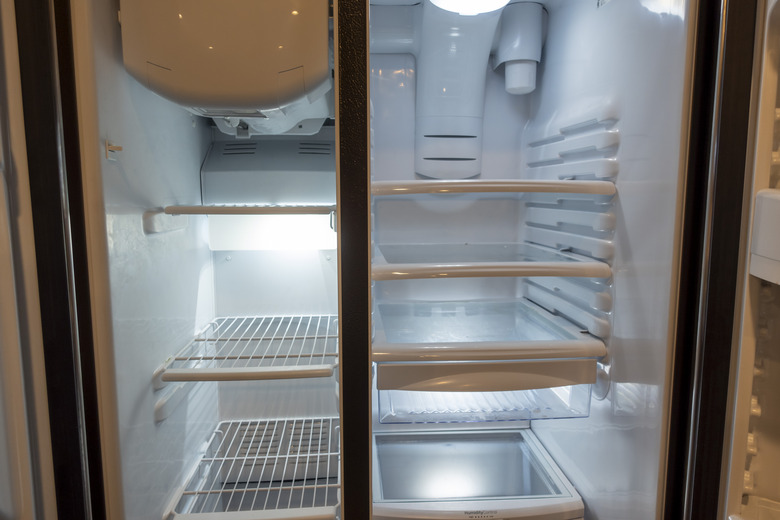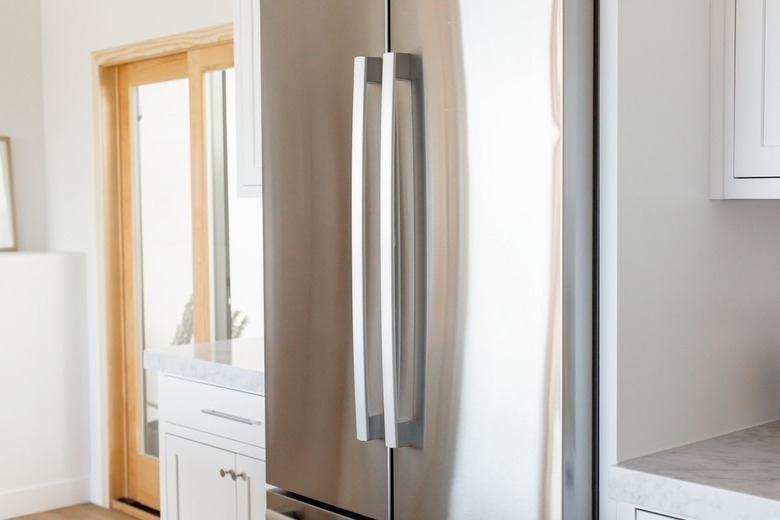What Kind Of Light Bulb Do You Need For The Fridge? Here's What To Know
We may receive a commission on purchases made from links.
A refrigerator light bulb isn't something that people think about a lot until it goes out. While the loss of light could signal a major malfunction with the appliance, it's much more likely that the bulb has simply worn out and needs to be replaced.
The type of replacement bulb you need depends on the make and model of the refrigerator. Many contemporary refrigerators, such as the Frigidaire French Door refrigerator, have model-specific LED lighting fixtures, but screw-in refrigerator bulbs are also common. Here's how to find the right bulb for your fridge the next time yours goes out.
The Standard Screw-In Refrigerator Light Bulb
The Standard Screw-In Refrigerator Light Bulb
A refrigerator bulb is known as an A15 bulb, which refers to the shape and size of the dome. Standard light fixtures take A19 bulbs, which measure 2 3/8 inches across the widest part of the dome, but A15 bulbs measure only 1 7/8 inches, which allows them to take up less valuable space in the refrigerator. A15 bulbs can be clear or frosted, just like regular bulbs.
An A15 bulb — also known as an appliance bulb — often has the same size screw base as an A19 bulb, which is another reason you might think they are interchangeable. Base size for A15 bulbs isn't universal, though; some have an E17 screw base, which is known as an intermediate base and is smaller than the E26 base (medium base) on a regular light bulb. Moreover, some specialty bulbs, such as the one illuminating the water dispenser, have different base sizes. The base you need depends on the light socket, so if you're in doubt, it's best to take the old bulb to a home center and buy a replacement with the same base.
An appliance bulb is the type you'll also find in a range hood or ceiling fan, and although it looks like a refrigerator bulb, it isn't the same thing. Because the environment in a refrigerator can be wet, a refrigerator bulb is designed to be waterproof, it has a thicker globe to make it shatterproof, and it's designed to work at low temperatures that could make a regular appliance bulb pop.
Energy Saving Refrigerator Bulbs
Energy Saving Refrigerator Bulbs
When using incandescent bulbs in a refrigerator, 40-watt bulbs are the most common, although some refrigerators are designed for 10- 15-, or even 60-watt bulbs. Incandescent bulbs produce light by passing electricity through a filament, which also generates heat. A bulb with a very high wattage might provide more illumination, but it would make the refrigerator too warm. That's why it's important to check the manufacturer's specifications to ensure you don't exceed the recommended wattage.
LEDs
You can save on energy by replacing the existing incandescent fridge light bulb with an LED bulb. LED light bulbs produce the same illumination (measured in lumens) as incandescents while using a fraction of the electricity and generating less heat. An LED bulb consuming 8.5 watts produces as much light as a 60-watt incandescent and has a longer lifespan (as much as 25 times longer, according to some estimates).
A15 LED refrigerator bulbs are readily available on Amazon and at home centers, but most have E26 bases, so if you need a different base, you may have to shop around. For example, some manufacturers, such as Frigidaire Electrolux, provide LED bulbs with E12 screw bases for water dispensers, and European appliance manufacturers often supply bulbs with E14 bases.
CFLs
Like LEDs, compact fluorescent bulbs (CFLs) also use less power than incandescents, but they aren't good candidates for refrigerator lighting because they don't work well in cold temperatures. Similarly, halogen bulbs generate too much heat for use in a refrigerator. You might come across a refrigerator light bulb labeled as a halogen bulb, but that usually means it's an LED that generates the same amount of light as a halogen.
LED Lighting on Newer Fridges
LED Lighting on Newer Fridges
These days, refrigerator manufacturers routinely incorporate LEDs into lighting strips, panels and removable modules that they install in the fridge door, the refrigerator interior and even in the freezer. By virtue of being LEDs, these strips, panels and modules are long-lasting, but they do burn out (or, more likely, their electronics malfunction) on occasion and need to be replaced.
Other Reasons Your Fridge Light Isn't Turning On
Other Reasons Your Fridge Light Isn't Turning On
If the fridge is dark, you may need a new bulb, but you may not. Some other fault may be preventing the light from coming on, and you may be able to find it fairly quickly. Four common possibilities include:
- The door switch is malfunctioning – A refrigerator light is activated by a push-button switch in the door frame. The switch cuts power when the door closes and pushes it in, and it restores power when the door opens and it pops out. If it's stuck and stays in when the door is open, you may need to manually free it and/or lubricate it. It's also possible for the switch to be faulty, and you can check for that by doing a continuity test on the switch, using a multimeter.
- The door has been open too long – Some manufacturers equip their models with a timer that automatically shuts off the light when the door stays open. To check this, close the door, then open it again. In some cases, you may have to unplug the fridge for 30 seconds to a minute to reset the controls.
- The socket is dead – There may be a wiring problem that has cut power to the socket. To investigate, unscrew the bulb and test the socket with a voltmeter. Put one lead on the base of the socket and one just touching the side of the socket sleeve. The meter should read 120 volts. If there's no reading, call an appliance technician to inspect the wiring.
- There's a problem in the main wiring harness – If you have a newer fridge with LED lighting, and the lights don't work, there's probably an issue in the wiring harness or the main control panel. Diagnosing and fixing this is a job for a licensed technician.
